COMMENT:
The histologic changes are modest but consistent with a low-grade cholestatic process. In conjunction with the clinical data, the differential possibilities would include drug induced liver injury, a reaction to (unsampled) intrahepatic mass lesions, and low grade biliary obstruction such as by bile duct carcinoma or duct strictures.
Previous Biopsies on this Patient:
NONE
TPIS Related Resources:
Knodell Scoring
Liver Transplant Topics
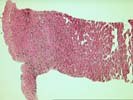
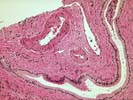
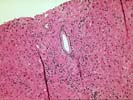
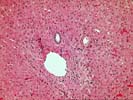
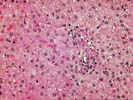
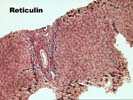
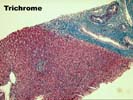
The liver biopsy consists largely of subcapsular tissue, but the overall architecture is intact. There is mild sinusoidal dilatation noted immediately beneath the capsular surface, but this is probably artifactual in nature. The portal tracts show very minor changes consisting of slight edema in the periportal zone together with mild ductular reactivity and an occasional scattered neutrophils, eosinophils and lymphocytes. Interlobular bile ducts are essentially unremarkable with no florid duct lesions, duct injury, or duct loss. The lobules are largely unremarkable with only an occasional focal necrosis. Lipofuscin pigment is diffusely prominent across the lobule. Reticulin stain demonstrates normal architecture and no evidence of nodular regeneration or the early hyperplastic changes sometimes seen in early biliary disorders. There are no ground glass cells, cytoplasmic globules, viral inclusions or evidence of steatosis identified.
The changes are very minor, but do point towards a cholestatic process. These features can be seen with injury caused by a number of therapeutic drugs, in the vicinity of mass lesions in the liver, or with low grade biliary obstruction. The latter two possibilities appear to have been largely excluded by the imaging procedures, but careful re-review of these studies might be worthwhile if no other explanation for the patient's liver test abnormalities is forthcoming.